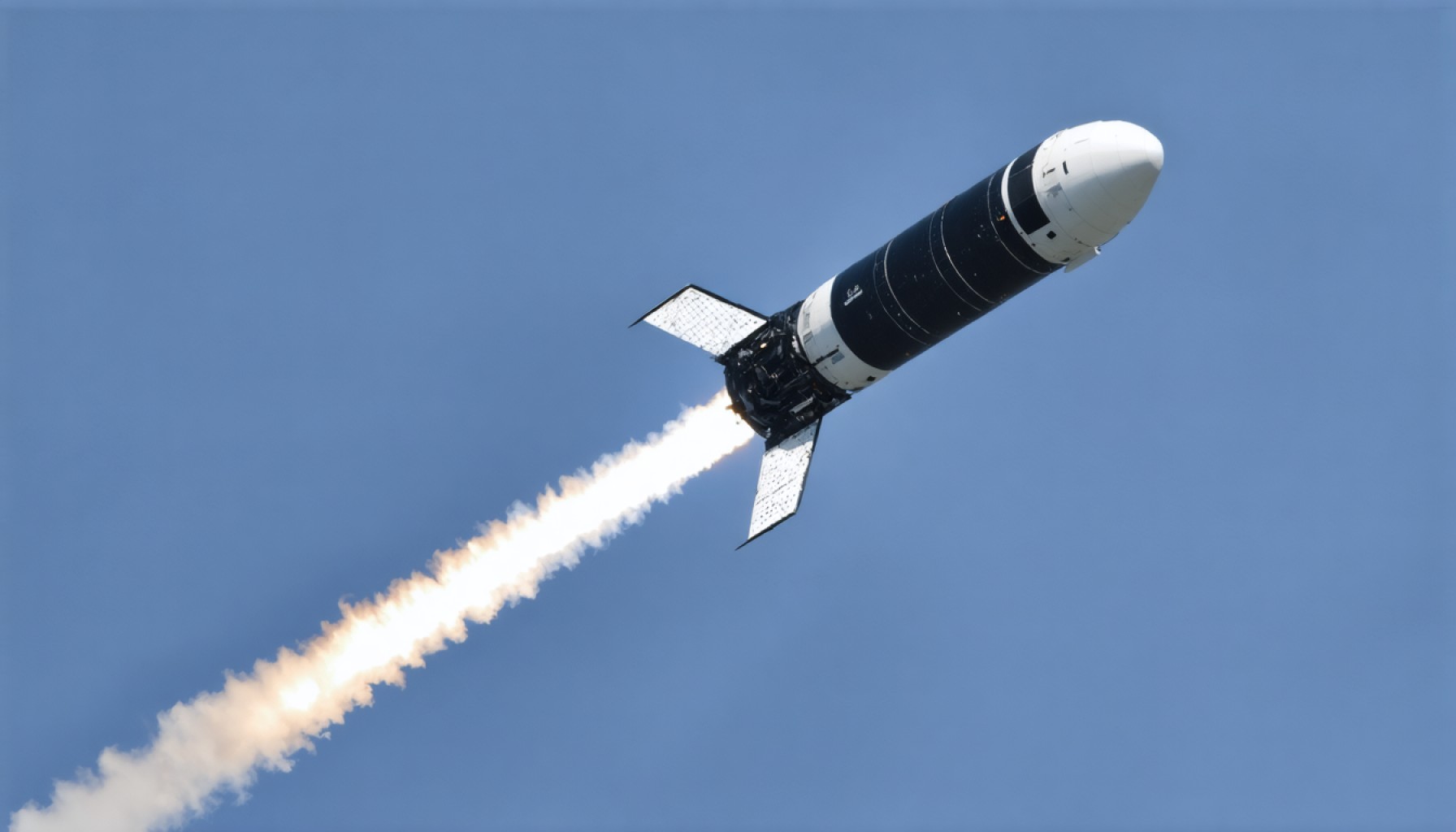- SpaceX is preparing for the Starlink 12-17 mission from Kennedy Space Center with an anticipated launch at 8:52 p.m. EDT.
- The mission aims to deploy 21 Starlink satellites to enhance global internet connectivity.
- Launch delays have occurred due to unspecified issues and weather-related challenges.
- The Falcon 9 rocket, carrying the satellites, will return its first stage to a drone ship, “A Shortfall of Gravitas,” in the Atlantic Ocean.
- Another SpaceX mission is scheduled from Space Launch Complex 40 the following night.
- The Atlas V launch faces delays with no new scheduled date due to weather conditions.
- SpaceX continues to push the boundaries of space exploration, aligning technology with human dreams amid nature’s unpredictability.
The expansive Floridian skies prepare to embrace yet another celestial dance as SpaceX recalibrates for its next ambitious venture into the heavens. After two consecutive days of postponed launches, all eyes are set on the Kennedy Space Center this evening, where the Starlink 12-17 mission waits for its moment.
Amid the whispers of anticipation, 21 Starlink satellites lie in wait aboard the towering Falcon 9 rocket. These satellites, the newest members of SpaceX’s ever-expanding constellation, promise to weave a tighter web of global internet connectivity. Come 8:52 p.m. EDT, if the cosmic gods favor the endeavor, the journey will commence. Should the universe choose a different path, the window stretches through the midnight hours, closing at 12:42 a.m. on Sunday.
The reasons behind the recent launch delays remain veiled in mystery. Friday’s scrub seemingly dodged adverse weather, yet Saturday’s attempt met atmospheric reluctance, casting caution as the formidable Falcon sat dormant, unfueled. But today, Cape Canaveral’s famously capricious weather teeters on the edge of cooperation, holding its breath along with the rest of the world.
Upon a successful liftoff, the Falcon 9 will carve a southeast trajectory across the sky. The thunderous applause of its ascent, however, will refrain from disturbing the tranquillity of Central Florida, as the first stage takes a graceful return not to land, but to the ocean’s gentler embrace. Awaiting it is the drone ship, whimsically christened “A Shortfall of Gravitas”, poised in the Atlantic to cradle the returning hero.
The saga of space exploration never pauses. Even as the Starlink mission unfurls, SpaceX eyes another endeavor no earlier than 9:59 p.m. the following night from Space Launch Complex 40. Meanwhile, the Atlas V waits in the wings, its own narrative delayed by nature’s windy sighs, with no new launch date yet carved into the calendar.
Through each launch, SpaceX doesn’t merely send satellites skyward; it aligns technology with humanity’s loftiest dreams. This mission serves as a poignant reminder of how each calculated risk, each weather delay, forms the intricate dance between human ambition and nature’s whims.
As the countdown ticks away, those with eyes cast upward or devices tuned into live streams stand in vicarious unity, brimming with collective hope that science will once again cross uncharted territories, connecting us all in an ever-closer orbit.
SpaceX’s Starlink Launch: What’s Next for Global Connectivity and Space Exploration?
Overview
As SpaceX prepares for its next Starlink launch from the Kennedy Space Center, the tech community, astronomers, and internet enthusiasts worldwide are watching with eager anticipation. The Starlink 12-17 mission adds another 21 satellites to SpaceX’s burgeoning constellation, promising to enhance global internet accessibility and solidify SpaceX’s position in space exploration.
The Current State of Starlink
Features and Specs:
1. Constellation Size: With this launch, SpaceX nears the deployment of nearly 5,000 Starlink satellites in orbit, boasting a rapidly expanding network aimed at providing broadband internet to underserved regions.
2. Satellite Design: The new iterations of Starlink satellites continue to improve in technology, featuring enhanced solar arrays and more efficient communication technologies.
Global Impact and Real-World Use Cases:
1. Bridging Digital Divides: Starlink aims to bring high-speed internet to rural and remote areas globally, which could revolutionize education, healthcare, and economic opportunities in underserved regions.
2. Disaster Relief: The network has potential applications in disaster scenarios where traditional infrastructure is compromised. Starlink’s rapid deployment offers a lifeline for communication in emergency situations.
Trends and Predictions
Market Forecast:
– Industry Growth: The satellite internet market is expected to grow exponentially, driven by increasing demand for low-latency internet connections, especially in isolated areas.
– Competitors to Watch: Although SpaceX leads the nascent satellite internet market, other entrants like Amazon’s Project Kuiper and OneWeb are key players to monitor.
Future Prospects:
– Enhanced Services: As more satellites are deployed, expect improvements in service quality, including faster data rates and broader coverage.
– Regulatory Challenges: Increased number of satellites could face scrutiny related to space debris and regulatory compliance with various nations’ telecommunications policies.
Challenges and Controversies
1. Weather Delays: As evidenced by the recent postponed launches, weather conditions remain a significant factor influencing launch schedules, embodying both technological advancement and natural unpredictability.
2. Space Debris: The growing number of satellites has intensified concerns about space debris and the long-term sustainability of space operations.
3. Light Pollution: Astronomers have raised concerns about the impact of large satellite constellations on astronomical observations, advocating for solutions that minimize visual interference.
Actionable Recommendations
– Stay Informed: For those keen on observing the developments in real-time, platforms like SpaceX’s official site and livestream services provide updates and live coverage of launches.
– Consider Starlink Services: For consumers in remote areas seeking reliable internet, investigating Starlink as a viable internet service provider can be a practical next step.
Conclusion
SpaceX stands at the forefront of both connectivity and exploration. As it continues to weave a digital web around our planet, the implications for internet access and space industry innovation are substantial. Enthusiasts, investors, and consumers alike should stay tuned for the next chapters in this exciting saga, one that promises to reshape our global connectivity landscape and redefine our relationship with space.
For more information about Starlink and SpaceX, visit SpaceX’s official site.
